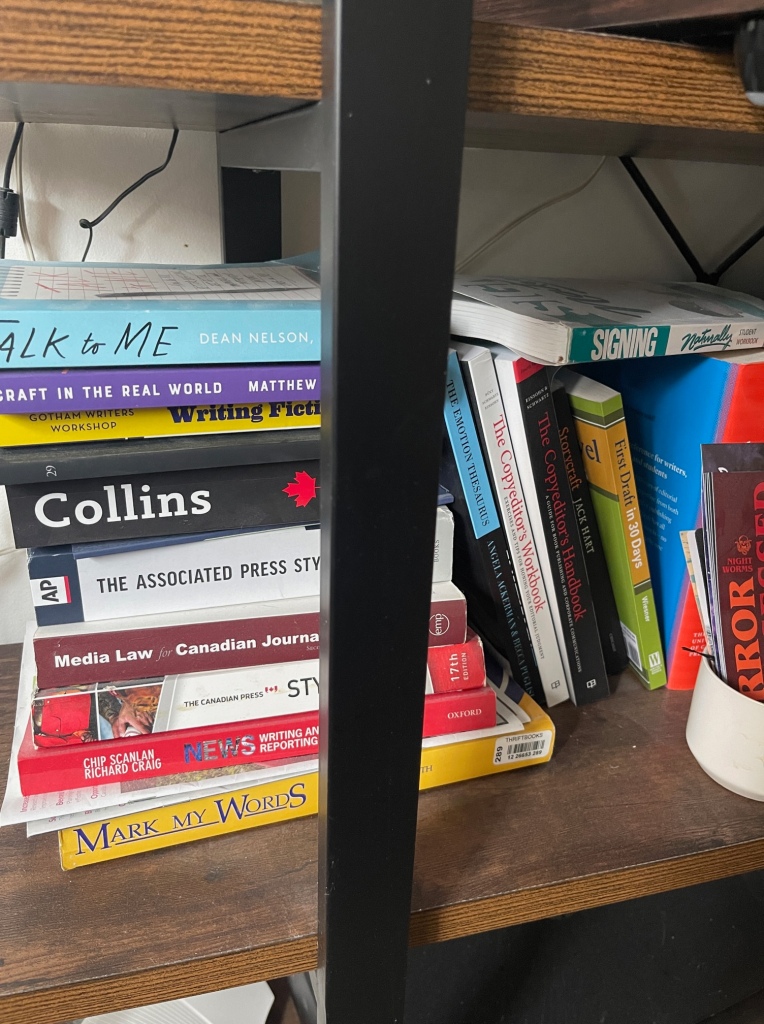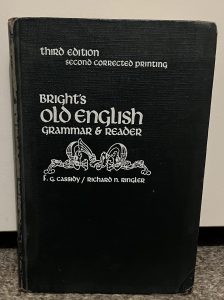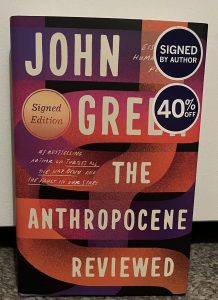In this column, members of the editing community share what’s on their (physical) bookshelves and highlight a few notable titles. In this, our second instalment, editors from Vancouver, Toronto, and Montreal share some of their favourites. If you’d like to show us your bookshelf, or part of it, let us know, or take a peak at more bookshelves!
Małgosia Halliop (she/her) is a freelance writer and editor. Her bookshelf is in Toronto.

The large bookshelf in my office holds all my editing books and books on the craft of writing; the photo represents about a quarter of the bookshelf. This shelf is also where I keep some of my books on environmental subjects and some of my field guides. (There’s a whole other shelf in my dining room crammed full with both those categories.) Finally, it is where I keep poetry collections and chapbooks, copies of literary journals, and a few other categories of books.
My editing collection includes the usual suspects: the Chicago Manual of Style, Editing Canadian English, the Canadian Oxford Dictionary (COD). My print copy of the COD is the first edition—these days, when I’m editing, I normally access the online version of the second edition through my Editors Canada membership, then cross-reference it with other dictionaries if the COD is missing the word I need. I remember how excited I was when the COD first came out—Canada finally had its own dictionary! But now it’s out of date, and I am eagerly awaiting something more current (and I’m happy to hear that Editors Canada is aiming to remedy this gap).
One book I think every Canadian editor could use is Gregory Younging’s Elements of Indigenous Style. It’s a slim but rich resource for writing, by and about Indigenous Peoples, with historical and cultural context and helpful advice on terms to avoid and terms to use instead.
Another favourite book on this shelf is A Swim in a Pond in the Rain, by George Saunders. Saunders explores the craft of several classic Russian short stories by Chekhov, Tolstoy, and other writers. It’s a book about reading and about fiction writing, but it’s also a book that is in some bigger way simply about being human.
Steph Coelho is a freelance writer and editor. Her bookshelf is in Montreal.
The rest of my life is a lot more organized than my dusty office bookshelf. I think that’s a result of improving my work-life balance this year. When my work is done, I no longer hang out in my home office.
Dust aside, my little book collection serves me well as a professional editor and writer. The usual suspects (dictionaries, stylebooks, and editing handbooks and workbooks) are must-haves that keep me on my toes. The learning never stops, and I periodically flip through these to brush up on my weak spots.
But you’ll also spot a few not-so-obvious picks:
- Journal 29 is the thin, almost hidden book that has nothing to do with editing. It’s actually a puzzle book. I have various puzzle books stashed around my home, including Murdle (volumes 1 and 2). Regular puzzling helps break up the day and keeps my brain cells working.
- Signing Naturally is an ASL education book. Exposing myself to new languages, ideas, and cultures means constantly opening my eyes to fresh perspectives, which I think is essential to being a successful editor.
- The Emotion Thesaurus: A Writer’s Guide to Character Expression is exactly what it sounds like, and while I mainly have it on hand to help me when I’m stuck in a writing rut, it’s also useful for editing.
- Storycraft: The Complete Guide to Writing Narrative Nonfiction dives into how to craft a compelling narrative. It’s mainly geared toward non-fiction writers and journalists, but as someone who specializes in developmental editing, I need to be skilled at storytelling so I can move pieces around in a way that makes sense.
Joyce Chung (she/her, they/them) is a copy editor and the owner HoneyQuill Editing. Her bookshelf is in Vancouver.
My bookshelf isn’t really a shelf. When I moved to my current home two years ago, I only took the books I could physically take with me, which amounted to 17. I keep all my print books stacked on my desk and the rest of them on my laptop. Despite my small collection, my books have taken up a lot of my spare time. Here are two of my favourites.
When I was in my third year of university, I participated in an extracurricular Old English club. The professor supervising the club lent me Bright’s Old English Grammar & Reader (Third Edition), by Frederic G. Cassidy and Richard N. Ringler, and it’s been in my care ever since. So much of the effort required to reconstruct an extinct language depends on understanding grammar and syntax, and this book takes the reader through comprehensive grammar rules, including those of anomalous verbs, participles, and noun declensions. As an editor, I recommend learning about Old English to see the origins of the English language, if only for interest’s sake.
The Anthropocene Reviewed is by John Green, best known as a young adult novelist and one half of the YouTube channel vlogbrothers, but he also has strong command as a nonfiction author. Green melds highly descriptive prose with staccato sentences and slang, as he rates Canada geese, Diet Dr. Pepper, and the Notes app on a scale of one to five stars. I don’t often worry about what it means to write for the modern era, but Green is a great example of a writer who has a clear grasp of his audience. I also have the signed hardcover edition. I can’t complain about that.
This article was copy edited by Andrea Benjamin, MA, JD, a legal editor and proofreader based in Toronto. She is the owner of AB Editorial.



